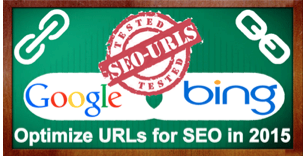Domains and URL’s have the same principles that make them effective search tools. The URL, or the Uniform Resource Locator is the address location of the website you are locating. In this example, Google Chrome has a URL: https://www.google.com.ph/webhp?sourceid=chrome-instant&ion=1&espv=2&ie=UTF-8#q=google
Usually, a URL that has a keyword in it will be on high on the list of in a search engine. In the example above, the word ‘google’ is the keyword. There are also some keywords that are actually a site within a mother site. They fall in another category that are distributed according to their type. For example, if you are searching for a place in America, say California and you use Google to search for it, the URL will read like this: https://www.google.com.ph/webhp?sourceid=chrome-instant&ion=1&espv=2&ie=UTF-8#q=california. This means that you used google to search for California, which appears at the end of the URL. Google is the mother site and California is the sub-site.
This shows that the URL for California has been optimized as it specifically leads you to the website of California by using Google. This only means that a URL can include more than one keyword in it. If you are looking for San Francisco in the search engine, the URL will include ‘San Francisco’ and ‘California’ in the URL.
Limitations on tracking have to be added to the URL to maximize its effectivity. This will help limit or manage the URL with regards to when it was visited and who visited it. This will certainly maximize the editorial and marketability of the website through the analysis tool of the website. In the two examples above, the tracking device is the ‘webhp?sourceid=.’ This is the part that controls everything going in and out of the website.
A URL must be very easy to understand and control. The best thing to do is to incorporate only the necessary words and numbers in the URL. Usage of un-necessary words, letters, numbers and figures are not ideal.
Pages in the URL are very helpful especially for Syracuse SEO firm. This will come in handy if the website has more than one page in its’ content. If the location has a page within its’ URL, the searcher will instantly be led to that page within the website.
A good example of this is when the URL for Marvel Comics which reads : https://www.google.com.ph/webhp?sourceid=chrome-instant&ion=1&espv=2&ie=UTF-8#q=marvel+. But if you go further and and search for Marvel Page 2 this will come out: https://www.google.com.ph/webhp?sourceid=chrome-instant&ion=1&espv=2&ie=UTF-8#q=marvel+page+2. Notice the ‘page+2’ at the end. This is certainly a whole new page full of contents regarding Marvel Comics.
There are some URL’s that can contain a certain keyword but leads to websites that are totally not related. In this case, it is very important to indicate a keyword within the URL that will definitely lead the searchers to your website. That means the keyword must be consistent to the content of the site.
Any URL is found in the address boxes of internet browsers. The best thing to do is to keep the URL simple. Too complicated URL’s that have very long names just will not do it and may lead people to other websites.

+ show Comments
- Hide Comments
add a comment